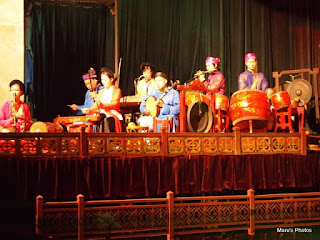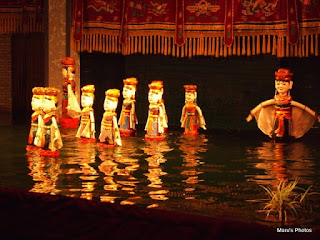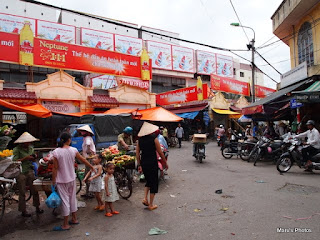There are two beauties in Vietnam. There is Miss Vietnam. And . . . . .
Well, HER pictures are everywhere. I saw her ironically in Cambodia at a hotel. She is really, really tall. It's fine. I'm not into taller women. Actually, the tour guide and a few other people kept on telling me that Vietnamese women are beautiful, pretty, mysterious, etc. It's even broken down by regions. Hanoi women are different than Saigon/Ho Chi Minh City women. I supposed the reason for these explanations is that I am the obvious bachelor of the group. I wasn't the one calling a significant other back home. I called to check on my psychotic cat. Regardless, those things are best for another personal trip, and even then, I have doubts about cross-cultural/cross-linguistic relationships. Well, no more about this stuff. I prefer to focus on other things.
The other beauty in Vietnam is Ha Long Bay. It is registered with UNESCO, and it pretty much deserves all the praise that it gets. The water in Ha Long Bay is very warm. I went for a swim, and it was really nice.
It is one of the wonders of the world. Largely defined by the limestone formations, this bay has some of the most beautiful scenery in the world. It could compare to Phang Na in Thailand, but the scope of the limestone formations make Phang Na seem like a training bike for the real thing.
This is the junk that we took over.
We would stop by a floating village where they farm pearls.
After the hectic pace, I don't think Rebecca or Sara know how to relax. Not.
On the first day, we rowed into the floating village for pearl farming.
They showed us how the Japanese method of farming works in Ha Long Bay.
She is working on an oyster.
Then we took a rowboat ride back to the junk.
Complete with a cool sunset.
Then a nice wrap up dinner.
Complete with a moonrise. Hard to see in this pic, but it's the best I could do.
It's time to see a cave. The Earth Science person was stoked.
These formations are the result of calcium deposits, as the Earth Science person said.
The thing is that the cave is massive and beautiful.
And the view from the hills was pretty nice.
Complete with formations that looked like legs hanging over a cliff.
A bunch of professors sitting in Ha Long Bay.
Even here, there is commerce occurring. This lady is selling seafood for the tour boats.
Someone had a birthday on the boat. Would that be Tanya?
And Ali was a witness to it.
























































